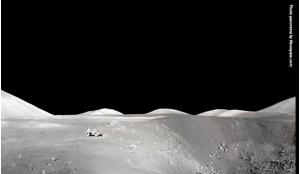In 2017 two incidents occurred which undeniably produced significant debris. The incidents were undeniable because both events were caught on video by a US company called ExoAnalytic Solutions Inc. It proved a watershed year for geostationary orbit (GEO), the orbit that hosts the majority of our commercial communications satellites. Mark Hempsell explains why he believes the sustainability of our geostationary assets is now at risk.
The first of the two geostationary satellites to fragment was AMC-9, a large communications satellite - built by Alcatel and operated by SES World Skies - that was servicing the USA and Mexico.
On 17 June 2017, it had just passed its fourteenth birthday when contact was lost. ExoAnalytic’s observations seem to have missed the event itself, but they do show the story that followed: the satellite was tumbling in orbit, passing by other GEO satellites, when on 25 June several large fragments could be seen separating from the main body. The strange thing, for a satellite that had apparently broken up, was that by 1 June SES had recovered the satellite and managed to get it to a safe ‘graveyard orbit’ (more on ‘how safe’ later). SES spokesman, Markus Payer, was quoted as saying: “We cannot say where the debris comes from and can definitely not confirm that it comes from the spacecraft.”
So what happened? My personal analysis concludes that the AMC-9 orbit after the event required a delta-v (velocity change) of 13 m/s. The momentum that was imparted to achieve this could not have been from venting, as there were not enough fluids on board, so only if the remaining propellant had been used in the thrusters could this velocity be achieved - and SES would have known if that had happened. So the momentum must have come from an impact from another body.














